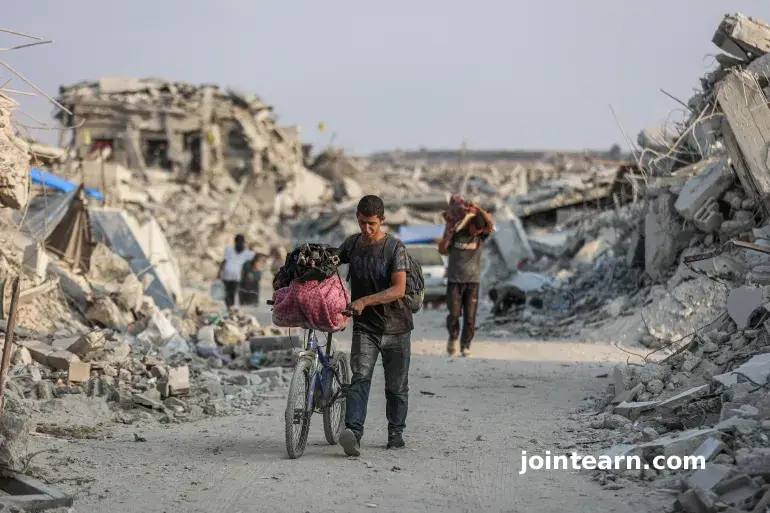
The United Nations has warned that humanitarian assistance to the Gaza Strip remains far too slow, despite a US-brokered truce and limited aid deliveries since October 10, 2025. The enclave, devastated by years of Israeli bombardment, continues to face severe shortages of food, water, medicine, and shelter.
UN spokesperson Farhan Haq said that 37,000 metric tonnes of aid, mostly food, have been delivered since the ceasefire, but stressed that the territory’s urgent needs remain immense.
“Despite significant progress on the humanitarian scale-up, people’s urgent needs are still immense, with impediments not being lifted quickly enough since the ceasefire,” Haq told reporters, citing UN humanitarian agency OCHA.
Restricted Access to Gaza
Aid deliveries are still largely restricted to only two crossings: al-Karara (Kissufim) and Karem Abu Salem (Kerem Shalom).
- No direct access exists to northern Gaza from Israel or southern Gaza from Egypt
- NGO personnel are being denied entry, limiting aid distribution further
The World Food Programme (WFP) has emphasized the need for all border crossings to be opened to fully address the famine-hit territory. Despite these constraints, food parcels have been distributed to around one million people since the ceasefire.
Ongoing Humanitarian Crisis
Palestinians across Gaza continue to experience:
- Severe food and water shortages
- Lack of essential medicines and healthcare
- Displacement due to destroyed homes and neighborhoods
Former UNRWA spokesperson Chris Gunness warned that Israel’s blockade of aid constitutes a war crime, leaving tens of thousands of Palestinians, mainly children, at risk of malnutrition.
“If Israel doesn’t meet its obligation to flood the Gaza Strip with humanitarian aid, then third-party countries must act,” Gunness said.
Ceasefire Context
The truce between Israel and Hamas began on October 10, 2025, under a US-brokered 20-point plan to end the conflict. Despite the agreement:
- Israel has carried out attacks in parts of Gaza, killing dozens
- Israeli forces remain in over 50% of the territory
- More than 220 Palestinians have been killed since the ceasefire, according to Gaza’s Ministry of Health
- Demolitions of residential buildings continue in areas such as Khan Younis
Captive Returns
The Israeli government confirmed receipt of the remains of one of the last six captives held by Hamas, delivered via the Red Cross.
- At the start of the truce, Hamas released all 20 surviving captives
- Israel freed hundreds of Palestinian prisoners and returned bodies of slain Palestinians
- Of the 28 deceased Israeli captives outlined in the ceasefire deal, 22 have been returned to Israel so far
Hamas reports that ongoing delays are due to the difficulty of recovering bodies from rubble where tens of thousands of Palestinians remain buried.
Key Takeaways
- The UN warns that humanitarian aid to Gaza is insufficient, despite ceasefire agreements.
- Aid access is restricted to two crossings, with NGOs largely denied entry.
- Palestinians continue to face severe shortages of food, water, and medicine, along with widespread displacement.
- Israel and Hamas ceasefire violations have killed over 220 Palestinians since October 10, 2025.
- Recovery of deceased captives and humanitarian relief remain critical issues under ongoing restrictions.


Leave a Reply